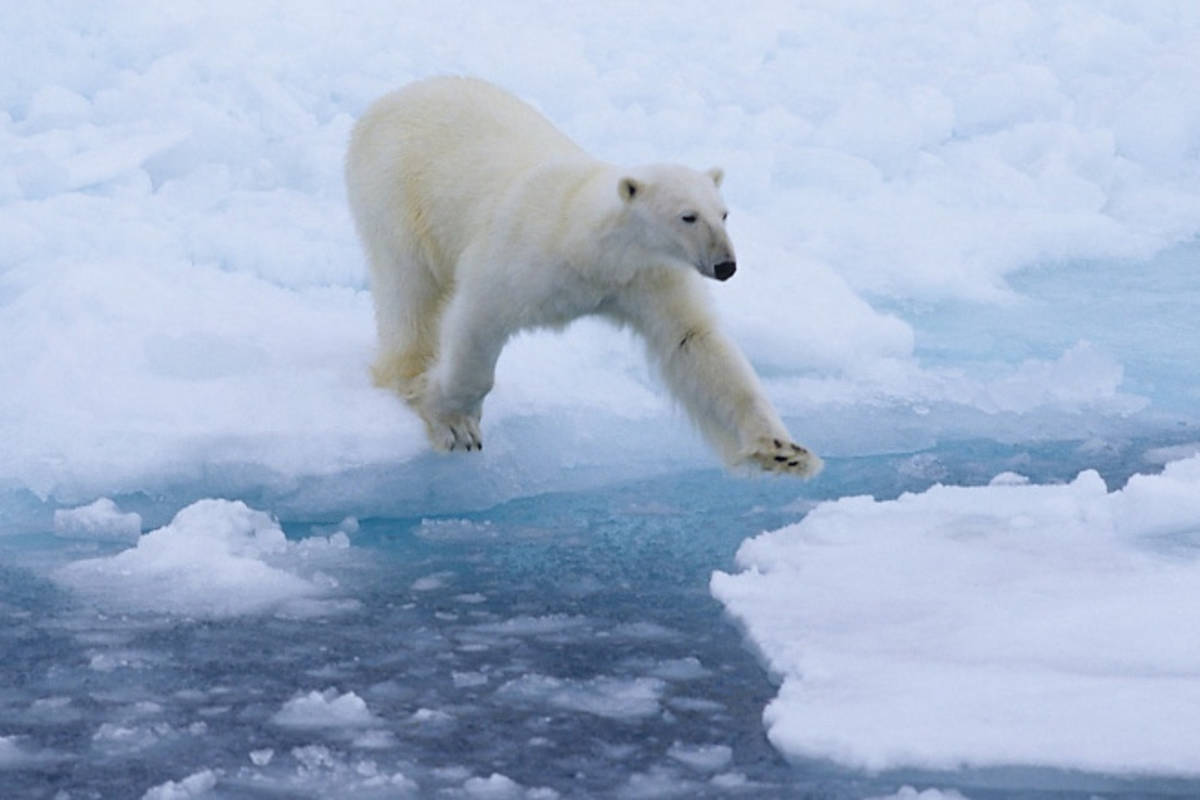Bozeman, Montana (July 11, 2017) - A new report by a team of experts from the polar bear “range states”—Canada, Greenland, Norway, Russia, and the United States—provides the first focal analysis of polar bear attacks on people, including what may have caused each incident. It also outlines steps to avoid attacks in the future.
Published in the Wildlife Society Bulletin, the paper explores the “perfect storm” of risks directly linked to the dramatic decrease in Arctic sea ice—which is causing more nutritionally stressed polar bears to spend more time on land—combined with an increase in human activity in the region.
The report calls for communities, governments, industry and NGOs to urgently mitigate potential future conflicts by implementing wildlife management solutions that are mutually beneficial for humans and bears. Some are already underway and successful.
Polar Bear Attacks on Humans: Implications of a Changing Climate researches and analyzes published accounts of polar bear attacks on humans since 1870. The paper is a significant step forward in understanding why polar bears attack humans, which is critical to ensuring human safety and conserving polar bears.
Correlation between sea ice loss and human-polar bear encounters
Between 1870-2014, there were 73 confirmed polar bear attacks in which 20 people were killed and 63 injured. The total since 1870 may sound low, but a telling statistic is the frequency, which may be increasing: 64% of all attacks since 1870 occurred between 1960 and 2009 (47 attacks), and 20% of the grand total (15 attacks) in the short period between 2010 and 2014. (Over the past few decades, reporting has increased along with better data sharing, but there still appears to be an upward trend. However, given the relatively small data set and short time frame, it’s too early to confirm that. Also, it's important to note that the authors found no trend in the number of attacks by decade from 1960–2014. Continued improvements in data collection and sharing will help wildlife managers monitor attacks, detect trends and hot spots, and increase delivery of solutions.)
The report’s authors also found that “nutritionally stressed adult male polar bears were the most likely to pose threats to human safety” with 61% of bears that attacked humans being in below-average body condition.
Learning to live closer than ever
Geoff York, senior director of conservation at Polar Bears International, chair of the Range States Working Group on polar bear-human conflicts, and one of the report’s authors, said it is “vital to stress that these results do not mean polar bears have necessarily become more aggressive.”
“The danger is the proximity to people, coupled with an increasing number of polar bears in poor body condition spending more time on shore. Both people and bears are trying to adapt to rapid changes on the ground and at sea,” he said.
Evidence from recent research on polar bear populations in Hudson Bay, the Beaufort Sea, and the Chukchi Sea, show individuals spending longer times onshore and in greater numbers.
“This is very tightly related to the decline in sea ice, as it pulls further away from the shore each year,” York said. “Bears are now having to make a choice as the ice melts each year: do they stay on the ice and retreat with it into deep Arctic waters or do they jump, come to shore, and take their chances on land?”
“Those who come ashore may come into conflict with human communities or activities. And as they get more desperate for food, they may well take higher risks.”
Hope through smart solutions
Northern communities who have long lived with bears are already beginning to adapt to living around more bears, including those that have witnessed bear attacks. Rather than relying on the most obvious reaction of shooting bears, they are implementing more sustainable solutions where possible.
However, much more needs to be done, such as ensuring that northern communities, industries, and visitors “have access to the best training and the tools to be safe in bear country, and to keep polar bears safe too.”
York said that unfortunately many places still don’t have access to the most modern and effective non-lethal deterrents.
“Despite being a global leader in managing disturbance and educating people on human-polar bear encounters, in Norway, for example, bear spray is currently illegal,” he said.
“So rather than making cans of spray available to visitors and workers, they check out rifles. While conflict kills remain low on Svalbard, the increased availability of less-lethal tools could bring that closer to zero in future years.”
Notes to editors
The report was compiled by experts from all polar bear “range states”: Canada, Greenland, Norway, Russia and the United States.
Its lead author and editor was James M. Wilder, Polar Bear Project Leader U.S. Fish & Wildlife Service.
Polar Bears International is a scientific, non-governmental, not-for-profit organization working to ensure a sustainable future for polar bears across the Arctic. Photos available on request.
Supplementary press materials:

















